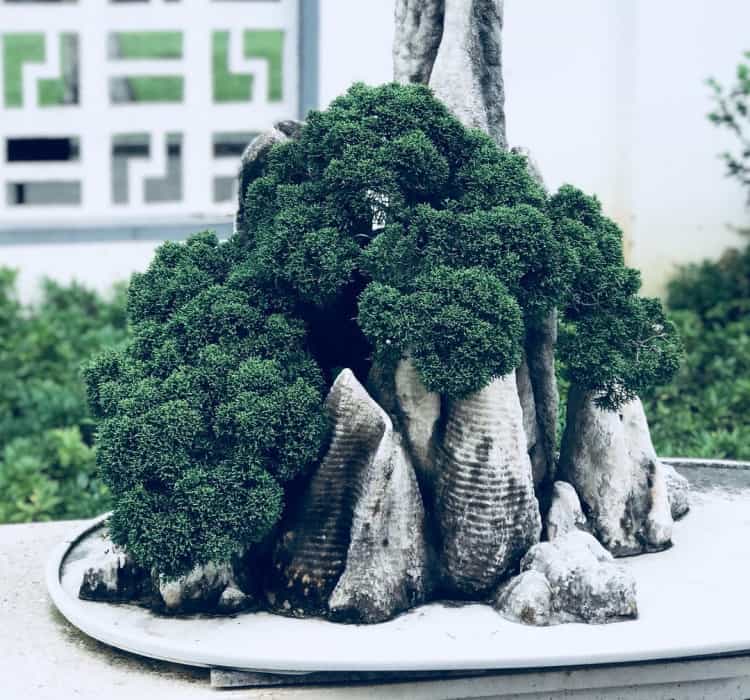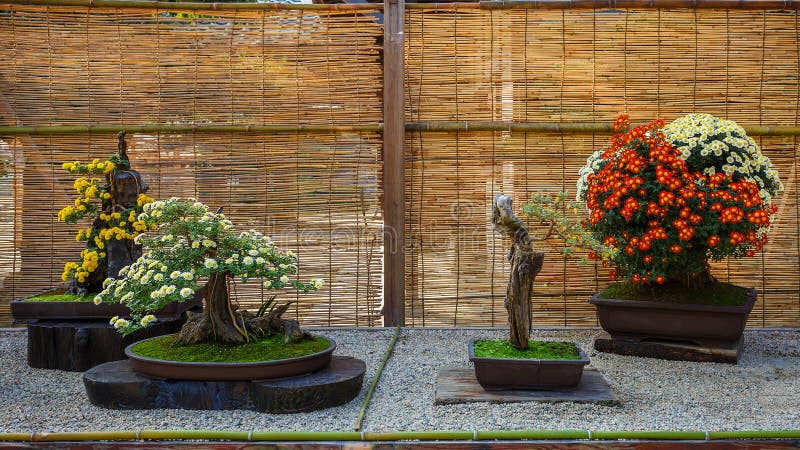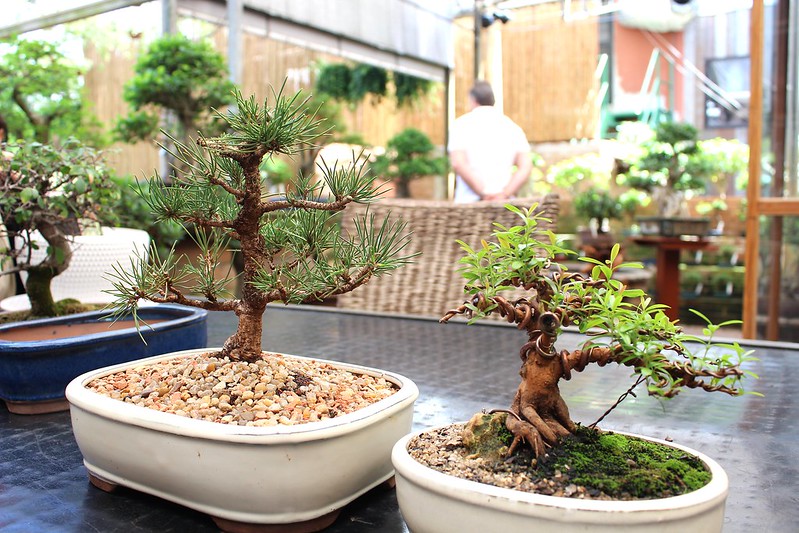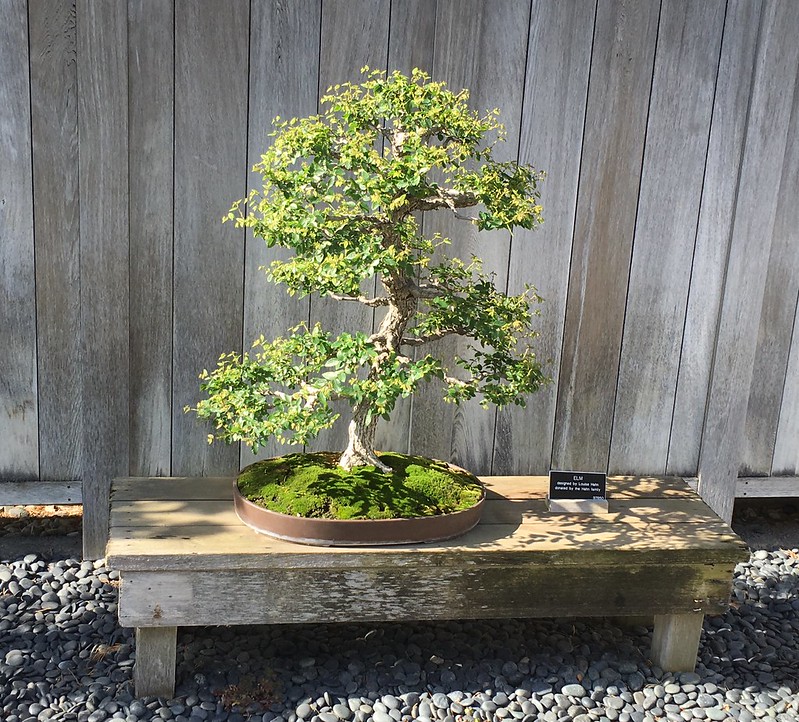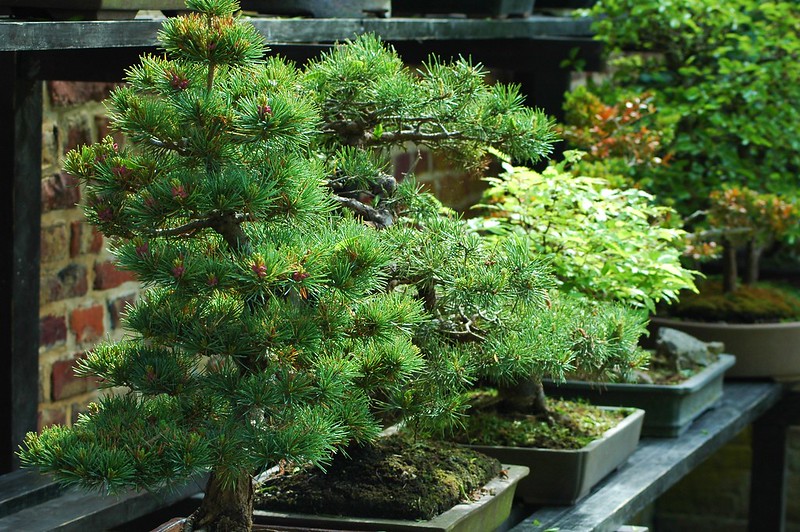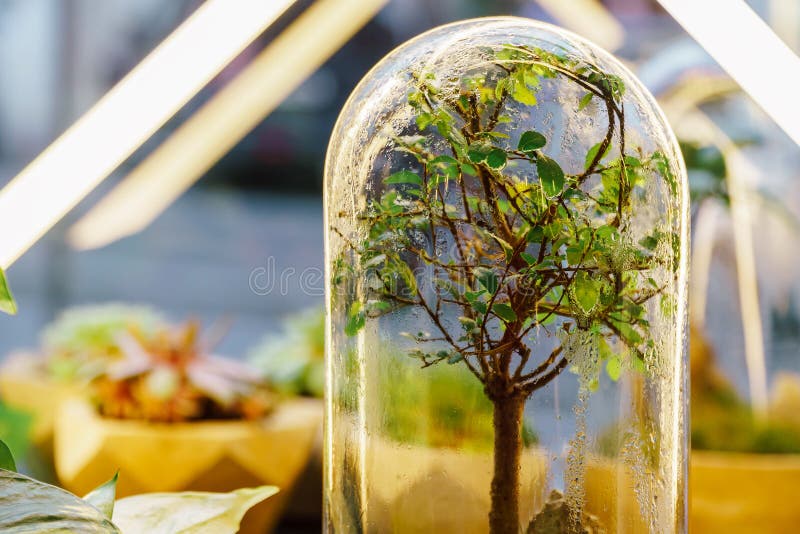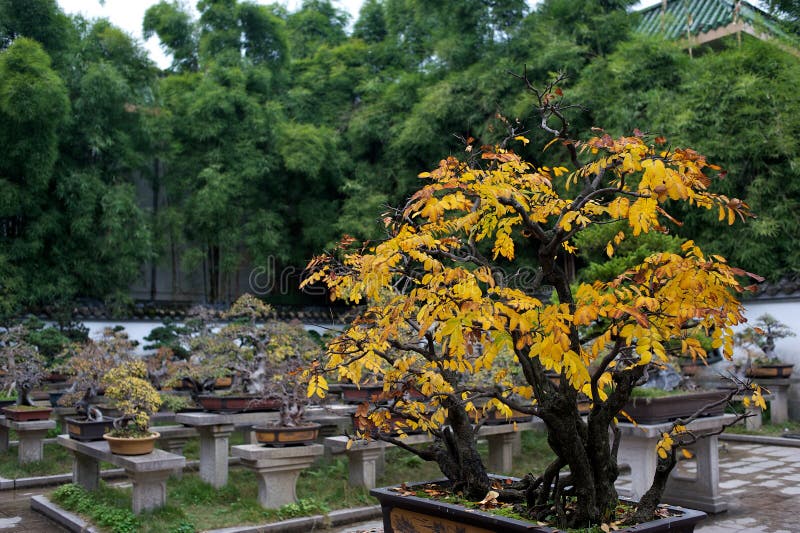HousePlantJoy is supported by our audience. When you purchase through one of our links, we may earn a small affiliate commission. As an Amazon Associate I earn from qualifying purchases. Your cost is not affected.
==================
Small Bonsai Garden Design
A well-designed bonsai landscape makes your trees stand out more than anything else. But designing a small bonsai garden like Japanese bonsai gardens is a challenging task. You have to find a way to display the trees at eye level; to make it even more attractive and have these traits of Japanese bonsai gardens, considering its criteria.
Moreover, some trees will need at least partial shade on the warmest days. However, our below mention small bonsai garden designs will help you in effectively decorating your bonsai garden.
Bonsais plants are great to have, because they’re elegant and beautiful. As a matter of fact, bonsai plants can be a great addition to any home because it allows you to practice gardening as well as add beauty to your yard.
In order for you to fully enjoy bonsai plants, consider having a garden full of bonsais or having a small bonsai garden design. This way you will have a whole collection of these lovely plants in one area instead of scattering them all across your yard. Doing so can look tacky and unorganized.
Starting Your Small Bonsai Garden
Here are some common questions you need to ask yourself when starting a bonsai garden:
Your Bonsai Garden Size
The first step that you should take if you want to have a small bonsai garden design is determining the size of your garden. In doing so, this makes it easier for you when choosing the types of bonsai that you are going to plant in your garden.
If you are growing more than one bonsai tree, then obviously the space of your bonsai garden should be enough for each tree. Do not crowd them together though because this does make it difficult when you prune and maintain them.
Types of Bonsai Plants
As mentioned above, knowing what size your bonsai garden is will make it easier for you to know which type of bonsai trees to get. If your bonsai garden can accommodate large-sized varieties, then get at least two or three big ones. That way they do not look odd with small-sized varieties. Also, you will get an overall good effect on the design of your bonsai garden especially if you space them well.
To create a good balance among the plants, be sure to get one that has a full and round canopy such as maples.
This type of bonsai tree is great for creating harmony. It does not stand out too much or look unbalanced with other trees. You also want to consider getting flowering trees. Such kinds are cherry blossoms and small-sized ones like pomegranates. These bonsais can add color to your bonsai garden designs.
Adding Other Elements
Aside from bonsais, there are other elements that you can add to your bonsai garden. Such examples are rocks, stone slabs, and waterfalls. These elements offer different textures and shades that will make your little bonsai garden more unique and appealing to look at.
Another element that adds a great effect to your bonsai garden design is lanterns. You can place these small lamps around your bonsai trees so you can enjoy gazing at their beauty even more after the sun has set.
When pruning and maintaining your bonsais, do not forget to provide partial shade and wind protection for each plant. These two elements keep your trees healthy and help them grow strong. Also, water them at least once a week and fertilize them twice a month with liquid fertilizer. Doing so will allow you to have a lovely bonsai garden in no time!
How to Design a Small Bonsai Garden?
Smaller trees can design in many ways in your indoor garden. However, planting your Bonsai in a dish garden is an incredible idea. A Dish bonsai garden can be a fun way to spend some time. With the right tree and technique, building a dish bonsai garden is a pretty easy task.
Here are some steps you can take when designing small professional bonsai gardens:
Choose Suitable Bonsai Plants
Before you get started, it is important that you pick the right plant to style into the bonsai garden. If you are not sure what type of tree will work best, then ask your local bonsai garden center for help. Show them pictures of the shape and size that you have in mind so they can help find something close to what you are looking for.
Find a Container With Drainage Holes
Now that you already know which type of bonsai tree to use in your dish garden, it’s time to start thinking about where to put everything in your dish bonsai garden. You may want to consider using something like an old wooden box or even an outdoor planter.
Whichever container you choose, make sure that it has a drainage hole in the bottom. If you don’t already have a container with a drain hole, then you can drill your own into the side or bottom of it. Be careful not to drill too close to the edge of your container because this could cause leakage.
Condition Your Tree Before Planting
The first thing you want to do before planting your bonsai tree is to soak it overnight in room-temperature water. This gives the bonsai roots some time to absorb some moisture so they won’t dry out after planting your tree.
While soaking the plant, be sure to keep an eye on how much soil is falling off of its roots. Do not let any dirt slip through! Once no more soil is washing away, you can take out your tree.
Place Your Tree in the Container
Place your bonsai tree in its new container and check for symmetry. You want to be sure that everything looks even on all sides so it will display nicely once completed. If you notice any lopsidedness above or below ground, then use a chopstick to adjust the plant’s position until it looks symmetrical from every angle
Remember not to over-tighten anything! There is no need to jam your roots into their new container. In fact, doing so could actually cause damage to the roots and keep them from absorbing water properly.
Add Soil Around Roots
Once you have found a nice place for your entire tree, it’s time to start adding soil. Begin by putting in the bottom layer. Spread out the roots and cover them with several inches of soil. Make sure that you do not put any soil inside the tree’s pot because this may suffocate the roots. Once you have covered all of your tree’s roots, then place some more soil on top of them until they are completely buried again.
Add Water
Once everything is planted, make sure to water your bonsai carefully before placing your dish bonsai garden somewhere bright and sunny! Be sure not to over-water or let anything leak. This can cause root rot; which is very bad for plants
After a few days have passed, check on your dish bonsai garden once a day to make sure everything is still getting enough water. If you notice the soil has dried out, then give it a good dousing of water until the soil begins to drain from the bottom of your container. Be careful not to over-water again because this can cause root rot as well!
Treat for Pests
Once your plants begin growing, you might notice that they have a few pests on them. Don’t worry, treating them is simple and will hardly disrupt their growth at all.
What is a dish bonsai garden?
Dish gardens are a kind of container garden where several plants are grown in small, open dishes or bowls. A dish garden may contain plants of the same or different species. These dish gardens commonly used to add color or texture to a room, whether indoors or outdoors.
Steps to design bonsai plants in a dish
Step 1: Learn about different bonsai trees.
There are many tree and shrub varieties that can use in a bonsai dish garden. Not all plants, though, make excellent Bonsai. Small leaves are a sign of a good bonsai candidate, as are those that can withstand a lot of pruning. The following is a small list of trees that you could use:
- Fir
- Camellia
- Japanese maple
- Fukien tea tree
- Juniper
- Ficus
- Trident maple
Step 2: Choose the Right Bonsai
Of course, when your Bonsai is kept as a houseplant, your options are greater. But if you want to be able to move the display outside for part of the year, you should understand the needs of the tree species you might use and its bonsai garden landscape.
Several considerations must consider when choosing a tree. It is vital to pick a tree that will flourish in your environment. If you do not choose a tree that can withstand your location’s cold, sun, and humidity, such as the bonsai garden landscape. The tree would either die or become costly to maintain. Conduct research on the tree species you want to plant, ensuring it can withstand the weather in your area.
Step 3: Choosing a Design
Another thing to worry about is the type of Bonsai you like to have. It is essential to know ahead of time since many bonsai types require specific tree and shrub species.
There are several different varieties to pick from, so do some homework on each one to see which one you prefer. The five most common options are listed below to have a chosen bonsai tree styles:
-
Formal Upright
The formal upright style of Bonsai is prevalent. This style is typical, particularly when the tree is exposed to a lot of light and isn’t competing with other trees. The tapering of the upright-growing tree trunks must be noticeable for this style. As a result, the tree would be narrower at the bottom and thin out as it becomes taller.
Because of their natural tapered form, coniferous trees are the perfect trees for this style. The following tree is appropriate for the formal upright type:
- Spruce
- Maple
- Juniper
- Pine
-
Informal Upright
The Moyogi, or casual upright style, is the most common bonsai tree style. This design base on the outline of a tree that has flourished in harsh environments of nature. The informal upright style does not have a straight tree trunks lines like the good traditional style.
The informal upright style is a little more relaxed and whimsical than the traditional, decent design. The tree’s apex remains parallel to the base, but the trunk twists and bends on the way to the tip.
The following plants are appropriate for the informal upright style:
- Trident Maple
- Juniper
- Beech
-
Cascade
The Kengai, or cascade form, is based on a natural tree bent downward and residing on a cliff. The trunk rises slightly upwards before suddenly descending to the point where the treetop meets the plant’s container’s bottom in this style.
The following three forms are appropriate for the cascade style:
- Scotch Pine
- Any Ficus Tree
- Any Coniferous Tree
-
Slanting
In the Slanting type, the tree trunk slants between 30 and 75 degrees. The tree is inclined, but it is kept relatively level. The divisions are symmetrical in their structure, while slanting bonsai style, is a lower branch growing in the opposite direction of the slant is often left to rise.
Step 4: Considering soil
Bonsai trees need a particular form of soil to survive. This soil must be able to hold water while still allowing excess water to flow easily. Since air is essential for Bonsai and its roots, soil with adequate aeration is necessary.
For Bonsai, a combination of organic and inorganic soil is typically optimal. The following are some excellent inorganic bonsai soil options:
- Akadama
- Fired clay
- Cat litter
Prefer to keep it organic? Composted bark or peat are safe alternatives for organic soil.
Step 5: Buy What You Need
You can purchase trees and shrubs from several sources until you’ve chosen which species you want. Your tree can buy from a specialty bonsai nursery, but any standard plant nursery would suffice.
Bonsai nurseries typically have akadama, but cat litter and fired clay are more readily available. You can buy any shallow pot, preferably ceramic, big enough for the Bonsai’s roots for the dish in your dish garden.
It is more realistic to buy a container with drainage holes. You may also purchase additional decorations for your greenhouse, as well as the equipment needed for pruning and shaping.
Step 6: Place your Bonsai Tree
The wire mesh should use to cover the drainage holes in your dish from soil escaping out. Before these gaps are covered, make sure that the Bonsai can thread into them. Place an inorganic layer of mud on the pot.
Subsequently placed an organic soil layer on top. Take your Bonsai and cut off the roots to the length you want to fit in your room until the dish is ready. It is essential not to cut it too hard when cutting the roots, or the tree will die.
Step 7: Pruning
Before adding your tree to your dish, you should do some preliminary pruning. Pruning and shaping tools include the following:
- A Wire
- Cutter Of Wires
- Shears For Small Cuts
- A Pair Of Scissors
Proper pruning is needed to achieve the perfect form for your Bonsai. One way to complete your bonsai garden ideas is to wire your tree to expand in a particular direction. Both copper and aluminum wire can use.
Copper is more robust, but it still has a greater risk of scarring the Bonsai. Aluminum is less solid, but it is safer. You will shape the tree by wrapping the wire around the bark or branches and softly twisting it.
Step 8: Decorating Your Bonsai Dish
Adding small grass, moss, shells, or rocks to your dish garden will give it character and give it the feel of a landscape or garden. Decorative parts can also add to this bonsai dish.
Anything that you think will bring vitality and charm to your garden can be added as long as it does not affect the Bonsai’s wellbeing.
Step 9: Maintenance
Proper nutrition and sunshine are essential for keeping your bonsai dish garden stable and resilient. Fertilizer pellets or foliar spray are also good alternatives for your Bonsai’s nutritional needs.
A spray bottle is ideal for watering the Bonsai. Water the Bonsai before excess water seeps out of the drainage hole in the bonsai pot. If you overwater your Bonsai, it will die.
Until watering, make sure the soil is arid on top. Finally, for maximum protection, your bonsai dish garden would need sufficient sunlight.
Bonsai in Terrariums
Terrariums are glass containers in which live plants can keep. In a terrarium, a bonsai tree will flourish. Not all tree species, however, can tolerate the growing conditions. Only trees that fulfill specific criteria will thrive in a terrarium. Scale, moisture level tolerance, and humidity tolerance are among these requirements.
For Terrariums, the Best Bonsai trees are:
- Ficus
- Fukien Tea
- Water Jasmine
- Bougainvillea
- Brazilian Rain Tree
Bonsai bench
When it comes to your bonsai masterpieces’ arrangement, selecting benches gives you a lot of creative freedom. There is also versatility in terms of building materials. Therefore, the bonsai bench is a good idea for a small bonsai garden design.
Benches are an excellent choice for bonsai enthusiasts of all levels of expertise because they are adaptable in terms of scale, form, and color, and you can also make your own DIY bonsai show bench.
Benches will also aid in the balanced creation of your miniature masterpieces indoor garden. So avoid the scramble and pick carefully to ensure that your Bonsai prosper and offer you much pleasure.
Bonsai Stand
Another great idea for an indoor bonsai garden is a bonsai stand. A bonsai stand, also known as a “shoku,” may be either a floor or a table stand. The stand should not be too ornate to the point of detracting from the Bonsai.
The color of the stand, like the jar, should complement the condition of the Bonsai. Most Bonsai look great with dark woods, but a flowering bonsai could look better with lighter wood.
Tips for A Well Designed Bonsai Garden
Now that you know how to design a bonsai garden, here are some more tips to maintain it:
Repot
If you find that your bonsai tree needs to be repotted or transplanted into a larger container, then take off its decorative dish. You should do so during its dormancy period so the roots won’t dry out due to transplanting shock. When you do repot your plant, remember to remove any soil that is covering its roots. Replace it with fresh soil when finished.
Prune
Once you begin to notice new growth sprouting up on your bonsai tree, then you will need to prune it in order for everything to remain proportional. Use extremely sharp clippers when doing so. Using dull ones can cause damage to the existing branches of your tree
Be sure not to over-prune! Only snip away any new growth that looks beyond repair or bothers you aesthetically. Your bonsai must always have one growing bonsai season before cutting anything off. This will allow the tree time to replace its foliage before losing it again.
Repot Into a Smaller Container
After your bonsai has grown for one or two growing seasons, you should be able to see whether or not you need to repot it again. When doing so, always water your plant thoroughly beforehand. Dry soil can damage your plant too if added suddenly
You do not want to make any drastic changes like changing the pot back into its original one. This could cause severe transplant shock and kill your plant. If it is still in good condition after undergoing several rounds of pruning, then give it another year before repotting into a larger container to slow down its growth.
Create an Appropriate Care Schedule
Now that you know how to take care of a bonsai garden, here is a recommended schedule that you can follow:
March – April (Before New Growth Appears)
– Prune new growth on your plant back, leaving only 2 or 3 leaves.
– Remove dead branches and leaves from your tree’s interior as well as its exterior
– Wipe off any dirt build-up on the leaves with a damp cloth. Be gentle! Too much water pressure can strip foliage of its green color rendering it useless
* Do not pour water over your plant directly. This can cause root rot if done too often. You should also wash under the canopy as opposed to above it – Do not fertilize your bonsai garden
June – August (After New Growth Appears)
– Prune new growth on your tree back, leaving only 2 or 3 leaves. Leave some of the old-growth intact as well if they are healthy looking
– Remove dead branches and leaves from your tree’s interior as well as its exterior
– Wipe off any dirt build-up on the leaves with a damp cloth. Be gentle! Too much water pressure can strip foliage of its green color rendering it useless. You should also wash under the canopy as opposed to above it
Note: Do not pour water over your plant directly. This can cause root rot if done too often. You should also wash under the canopy as opposed to above it
September – October (After the Growing Season)
– Repot your plant into a larger container. If you have just transplanted it, then do not prune any new growth until the following growing season in March – April! This will give your tree time to recover from transplant shock and produce more foliage before being cut back once again
– Remove dead branches and leaves from your tree’s interior as well as its exterior
– Wipe off any dirt build-up on the leaves with a damp cloth. Be gentle! Too much water pressure can strip foliage of its green color rendering it useless
Note: Do not fertilize your bonsai garden.
November – February (Dormancy)
– Keep your bonsai outdoors in indirect sunlight with normal home temperatures
– Water your plant once every two weeks using room temperature water that has been filtered or distilled
– Do not fertilize your bonsai during dormancy! Stop watering it during this period as well if you notice any of its leaves wilting
Note: When active growth returns in March, prune back all new shoots again according to the instructions above. Also, note for when repotting occurs in June – August, and September – October too!
Conclusion
A small bonsai garden design creates a beautiful display and brings a sense of serenity to your home. Many varieties of bonsai trees grow well indoors, providing you with plenty of options. Assembling professional bonsai gardens is enjoyable and well worth the time and effort. Try an indoor bonsai garden using a terrarium or dish garden. When you put it by the window or on a table you add soothing, aesthetic value to your indoor bonsai garden.
Read More

